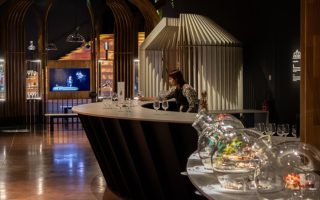Santé! Tour the Wine Villages of Provence
The southern Rhône Valley’s most famous appellations, Châteauneuf-du-Pape and Gigondas, hail from charming medieval villages whose many attractions make them a must on any Provençal tour in the south of France.
On the road to Châteauneuf-du-Pape the vineyards stretch as far as the eye can see, their scrubby vines grown wide and low to resist the ferocious mistral wind that thunders down the Rhône Valley to the Mediterranean. There’s no mistaking this is wine country, cultivated by the Romans and prized by the popes of old, who loved the sun- soaked ruby wines so much they made the village their summer home – the new château of the popes.
In the mid-1300s when the Avignon popes settled in for the season, the population of around 2,000 consisted mostly of peasant farmers who made wine. Today, the population barely tops 2,500 and the world-renowned estates that produce wines of earthy majesty open their doors to anyone eager to discover the fruits of this distinctive terroir.
Châteauneuf-du-Pape wines are made principally from a triumvirate of grapes that locals simply call ‘GSM’: Grenache (the reigning grape of the southern Rhône Valley), Syrah and Mourvèdre. Grenache dominates the Châteauneuf blends, producing rich, powerful, highly drinkable wines long on fruit (and alcohol, which can reach 16 per cent) but short on structure and freshness. Enter the ten other grape varieties used in this mostly blended appellation: though often only a tiny fraction of the blend, they account for the earthy, herbal and mineral notes and exhilarating range of expression these powerful wines are known for.
Boundless creativity
“The luck of Châteauneuf-du-Pape is we are free to do what we want. For me, the vitality of the appellation is the creativity, the emotion of each winemaker,” said Pierre Pastre of Château Fortia, long a benchmark in Châteauneuf-du-Pape wines. Château Fortia, founded in the 18th century, counts among its family winemakers Baron Le Roy de Boiseaumarié, a First World War fighter pilot and a legend in France for his role in creating the AOC designation. Instituted in 1929, AOC (Appellation d’origine contrôlée) defines the rules for each wine region to preserve the integrity and character of the wines. Châteauneuf-du-Pape was France’s first AOC wine.
You can do nicely sipping a 2020 vintage now, but you’ll be well rewarded for splurging on an older vintage – or being patient. Châteauneuf-du-Papes are generally not meant for early consumption, but vinified slowly and released after a year or two of ageing. They are easily cellared for five to 20 years.
For all its lofty stature in the wine world, the village is refreshingly down to earth. To sample the wines all around you, pop into one of the many estate tasting rooms. Visitors are given a warm welcome and a dégustation at some of the appellation’s most celebrated names: Fortia, Usseglio (both Raymond and Pierre), Domaine de Vieux Télégraphe, Ogier, Beaucastel, along with a host of fine younger producers.
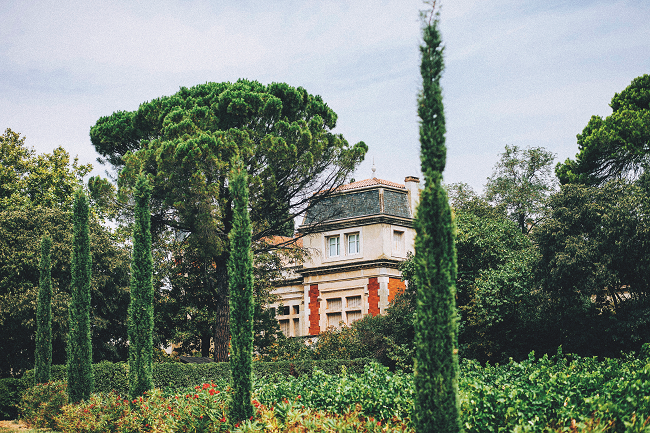
Château Fortia © VPA/G Kessler & Lezbroz
If you’re short on time or want to taste several domaines and vintages side by side, your best bet is the new Vinothèque. Under the arched ceilings of this state-of-the-art tasting room set in an ancient wine cave, you can put yourself in the hands of an expert or custom-design your own tasting from the dozens of estates represented here. This is a good idea for wine lovers and buyers alike, as these appellations are an investment – bottles start at around €25, with top vintages commanding upwards of €75.
The Vinothèque is also an excellent place to sample Châteauneuf-du-Pape’s dazzling whites, ranging in style from fresh and lively to lush, elegant nectars that can be cellared like a red. All of the wines can be purchased at Vinadea, just above the Vinothèque, which carries some 200 wines from 120 estates and also hosts tastings.
The pleasures of Châteauneuf-du-Pape are not limited to enjoying fine wines. The village is charming to explore and since the reopening of La Mère Germaine hotel and its Michelin-starred restaurant, it has reclaimed its historic status as a gastronomic destination.
The hotel and restaurant were once the domain of cordon bleu chef Germaine Vion, who put Châteauneuf-du-Pape on the culinary map in 1922 when she left her position in Paris as chef to the presidents of France to relocate to this quiet Provençal village. By 1932, her hotel-restaurant had earned two Michelin stars and was a major stop for well-heeled motorists and French celebrities, such as Mistinguett, Fernandel and Jean Gabin, en route to the Riviera.
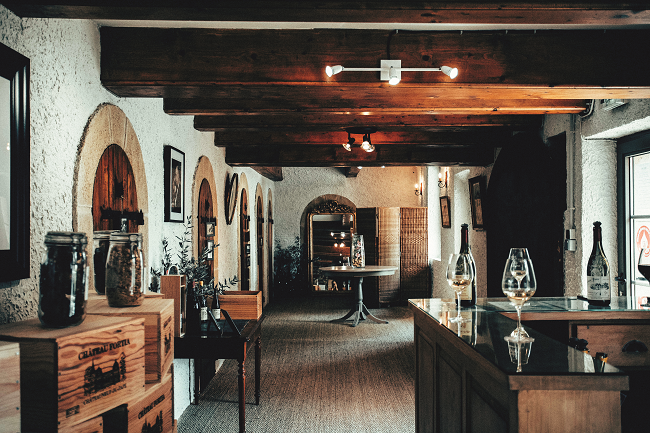
Château Fortia © VPA/G Kessler & Lezbroz
New lease of life
But in the intervening years, the restaurant and hotel lost their sheen. Isabelle and Arnaud Strasser, who adored the wines of the region, recognised their potential and set about restoring the 16th- and 18th-century townhouses set in the pretty square at the foot of the village.
The dazzling new La Mère Germaine restaurant earned a Michelin star within seven months of opening. Now, with two-star Belgian chef Christophe Hardiquest at the helm, diners can rely on his refined market-driven menu, accompanied by stellar local wines, for an afternoon or evening of gastronomic wonder – whether dining under the soaring dining room’s charming frescoes or enjoying the outdoor terraces’ sweeping views over vineyards to Avignon’s Palais des Papes.
But the pleasure doesn’t end here. Across the street at the stylish La Mère Germaine hotel, guests are enveloped in chic elegance, with all the lavish touches you’d find in a top Parisian hotel, all delivered with a deeply Provençal soul, of course.
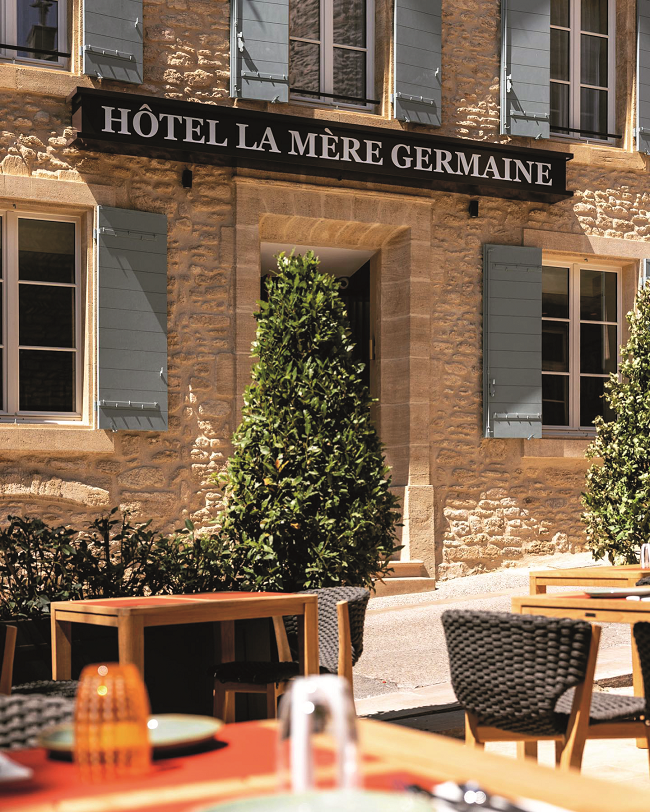
© La Mère Germaine facebook
Postcard-perfect Gigondas
On the half-hour drive to Gigondas, 15 miles northeast, Châteauneuf-du-Pape’s rugged terroir gives way to a more varied landscape interspersed with forests and scrubby garrigue. Tucked into the foothills of the jagged Dentelles de Montmirail mountain range, Gigondas’s medieval ramparts create a postcard-perfect scene.
This tiny village can be explored on foot in an hour or less. Take your time to stroll up to the parish church, built in the 11th century and rebuilt in 1759, and the beautifully restored 17th-century hospice, now the village’s cultural hub for musical performances and art exhibitions. A scenic walk to the top of the village takes you past the Cheminement de Sculptures, where contemporary artworks are interspersed with the native Provençal flowers and herbs, whose aromas can be detected in the earthy, robust wines made here.
The vines’ elevation on the village’s sloping hills, their exposure to the sun and wind, and Gigondas’s complex geology-encompassing more than 20 distinct terroirs – mean that one parcel has markedly different qualities from the next.
Like Châteauneuf-du-Pape, Gigondas is best known for its reds, made from the same 13 varieties, with juicy Grenache leading the fray.
A tasting of a dozen reds at the Caveau du Gigondas highlights the diversity of these robust wines – ranging from 100 per cent Grenache, as in a fresh and spicy 2020 Domaine des Bosquets, to Domaine de Teyssonnières’s smooth and delicious Cuvée Alexandre, blending every one of the region’s 13 red and white grape varieties. A good bottle can be had for €20, but vintages from the more famous domaines, like Château de Saint-Cosme, can rival a Châteauneuf-du-Pape for complexity and magnificence and easily command over €100 a bottle.
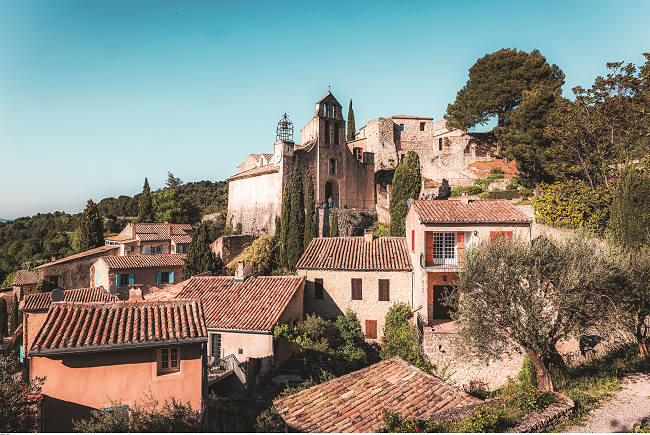
Gigondas © Teddy Verneuil
White wines join the club
While Gigondas received AOC status for its red wines in 1971, starting with the 2023 vintage, the Gigondas appellation will now also apply to its whites.
At the Caveau du Gigondas you can enjoy a parallel tasting of as many wines as you please, all for free, and then buy those you love. But there’s no substitute for a visit to one of the many domaines in and around the village. Pierre Amadieu, third-generation winemaker and Gigondas’s largest producer, offers a history and explanation of the terroir, along with a tasting. The domaine’s lovely five-room guesthouse, Villa Sainte-Anne, is a good choice for couples or families exploring the region’s many pleasures. Gourmets have their own reason for a pilgrimage to Gigondas: the marvellous L’Oustalet. Chef Laurent Deconinck has presided over this elegant dining room for nearly 15 years and earned a Michelin star in 2019 for dishes centred on the bounty of Provence, from asparagus in spring to black truffles in winter. In summer, when the restaurant spills out onto a lovely courtyard under tall plane trees, this is your dream of Provence come true. L’Oustalet also has a fine bistro, wine bar and cellar, and five tasteful guest rooms in a handsome 16th-century townhouse in the village centre.
If you have time, the area’s network of trails that snake from village to village around the vineyards and along the Dentelles de Montmirail offer endless views of Provence and Mont Ventoux.
From France Today Magazine
Lead photo credit : Château Fortia © G Kessler & Lezbroz
Share to: Facebook Twitter LinkedIn Email
More in Provence, South of France, vineyards, wine villages
Leave a reply
Your email address will not be published. Required fields are marked *




